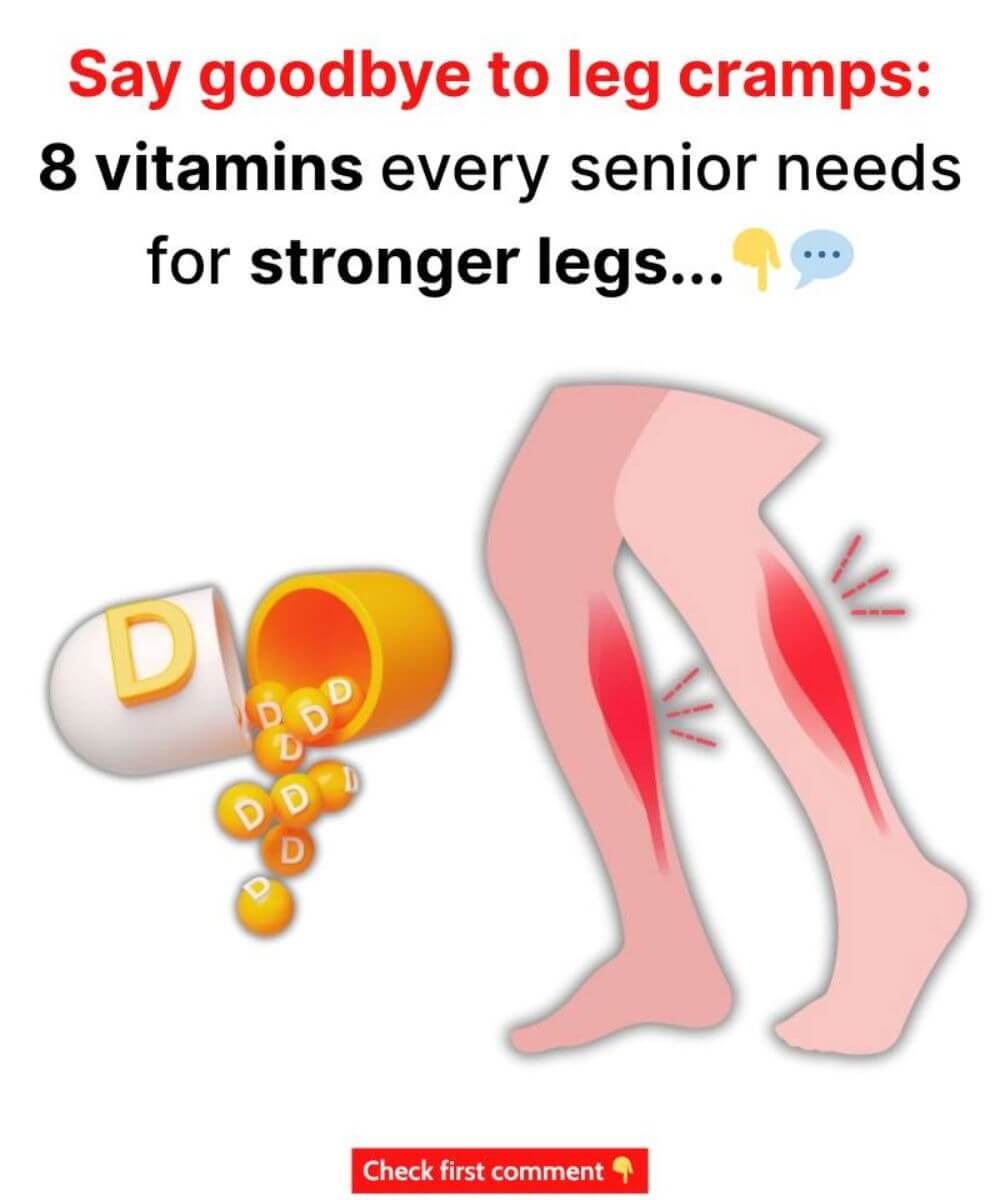If climbing stairs leaves you winded or getting out of a chair feels harder than it used to, don’t just blame aging. These signs of leg weakness often stem from overlooked vitamin and mineral deficiencies—not just time. For adults over 50, ensuring proper nutrition is one of the most powerful ways to support leg strength, mobility, and independence.
Nutrient Deficiencies Often Cause Leg Weakness After 50
Millions of people over the age of 50 struggle with leg cramps, fatigue, and unsteady balance, not realizing that missing nutrients may be the root cause. The good news? A targeted mix of vitamins and minerals can restore strength, ease discomfort, and improve daily function.
1. Vitamin D – Your Muscle and Bone Stabilizer
Vitamin D deficiency is widespread in older adults, affecting up to 60%. This vitamin is crucial for both bone density and muscle performance. Low levels are linked to reduced movement and an increased risk of falls. Supplementing with 800 to 2000 IU of vitamin D3 daily helps strengthen muscles and improve balance. Natural sources include sun exposure and fatty fish like salmon. For best absorption, take it with healthy fats.
2. Magnesium – The Anti-Cramp Mineral
If leg cramps strike frequently, magnesium deficiency may be to blame. Magnesium supports muscle relaxation and nerve function, preventing spasms and stiffness. Adults should aim for 320 to 420mg daily from foods like spinach, pumpkin seeds, or supplements like magnesium glycinate, which is gentle on digestion and highly absorbable.
3. Vitamin B12 – Critical for Nerve Signaling
Tingling, numbness, or balance issues can all signal a vitamin B12 deficiency. After 50, the body struggles to absorb B12 from food, increasing the risk of nerve damage. This vitamin plays a major role in communication between nerves and muscles. Consider sublingual methylcobalamin tablets or B12 injections for maximum benefit, especially if dietary changes alone aren’t enough.
4. Collagen – The Joint and Tissue Rebuilder
Collagen production naturally declines with age, leading to weaker joints, stiff tendons, and reduced muscle flexibility. Boost your intake with hydrolyzed collagen peptides and vitamin C for better absorption. Bone broth, chicken skin, and oily fish are excellent food-based options for maintaining connective tissue health.
5. Omega-3 Fatty Acids – Natural Inflammation Fighters
Chronic inflammation quietly breaks down muscle over time. Omega-3s like EPA and DHA combat this process and support muscle regeneration. For best results, take 1,000 to 2,000mg daily from sources such as sardines, wild-caught salmon, algae oil, or high-quality fish oil supplements with added vitamin E.
6. Zinc – Essential for Muscle Repair and Hormone Balance
Zinc supports muscle repair and promotes hormones like testosterone and growth hormone—both vital for muscle maintenance. Seniors often lack this key mineral, limiting muscle strength even with exercise. Aim for 15 to 30mg daily from pumpkin seeds, oysters, or grass-fed meats. Choose zinc picolinate supplements, and always pair with copper to prevent imbalance.
7. Vitamin K2 – Directs Calcium to the Right Places
Taking calcium without vitamin K2 can cause calcium to deposit in arteries instead of bones. K2 ensures it reaches your bones, strengthening them without harming your joints or heart. MK-7 is the best form—take 100 to 200 mcg daily or eat fermented foods like natto, aged cheeses, and grass-fed butter.
8. Selenium – The Muscle-Protecting Antioxidant
As you age, muscle tissues face constant oxidative stress. Selenium helps defend your cells and supports optimal thyroid function for energy and metabolism. Just two Brazil nuts a day provide 100–200 mcg of selenium. Pair it with vitamin E for powerful antioxidant protection.
How to Combine These Nutrients for Maximum Effect
These eight vitamins and minerals work together to create a full-spectrum leg support strategy. Vitamin D and magnesium strengthen muscle power, B12 restores nerve function, collagen repairs connective tissue, omega-3s reduce inflammation, zinc builds new muscle, K2 enhances calcium use, and selenium guards your cells from damage.
Many seniors report reduced leg cramps, improved stability, and higher energy levels within just a few weeks. You can create a simple daily plan using cod liver oil (vitamin D and omega-3s), nutritional yeast (B12), and pumpkin seeds (zinc and magnesium).
Final Thoughts
Leg weakness isn’t an inevitable part of aging—it’s often your body’s way of signaling a nutritional shortfall. With the right blend of nutrients, you can regain strength, reduce cramps, and improve mobility at any age. Start incorporating these vitamins into your daily routine to keep your legs strong and your life active.
